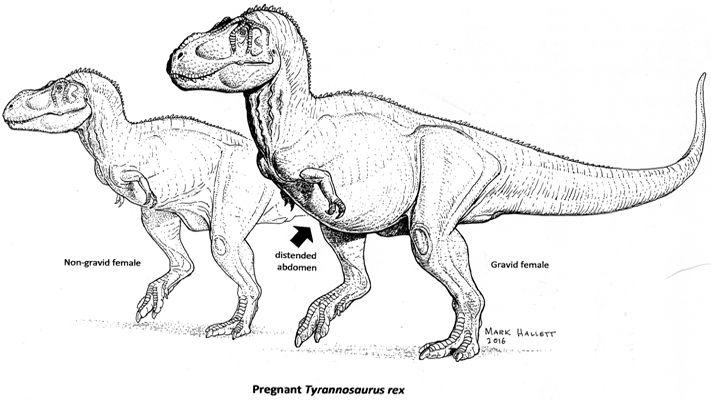Scientists from NC State and the North Carolina Museum of Natural History have found the first test for identifying a sex-linked trait in dinosaurs.
The research developed a new test that identifies a tissue found in only pregnant dinosaurs, opening the doors for more research opportunities surrounding the evolutionary patterns of a wide range of vertebrae.
Medullary bone tissue can be found in the bones of birds and was thought to be present in the bones of pregnant dinosaurs. This tissue is the only known indicator of a dinosaur’s sex, with its primary function storing the calcium needed to form eggshells. Undetectable post-birth, until recently it was impossible to identify in fossils.
“It’s very hard to find, very transient, very ephemeral tissue,” said Lindsay Zanno, assistant research professor in biological sciences at NC State and director of the Paleontology Research Laboratory at the North Carolina Museum of Natural Sciences. “It’s not there for most of their life.”
About a decade ago, the lead author of the research, Mary Schweitzer, a molecular paleontologist at NC State, found what was thought to be medullary bone in a 68 million year old Tyrannosaurus rex femur. The resulting research described the methods used to determine what this medullary bone tissue looked like.
“There’s other things that can mimic medullary bone,” Zanno said.
The key, she said, was detecting the distinct chemical pattern the tissue leaves behind.
“[The tests] are the only rigorous way we’ve found in the history of dinosaur paleontology to tell what’s male and what’s female,” Zanno said. “Now we can use those tests to determine [the presence of medullary bone] in other dinosaurs, and how and why it evolved.”
Sex plays a vital role in an animal’s biology. Reproduction — and the factors that influence it — is at the base of all life, controlling a population’s entire genetic makeup.
“To imagine that all of the research we do on dinosaurs was missing that critical information … you can see how the test opens up a whole new window of research for us,” Zanno said.
Understanding dinosaurs more comprehensively offers more than just new dinosaur facts about appearance and mating habits. Paleontological research adds collective insight into evolution as a whole.
“Dinosaurs reached some of the extremes of evolution,” said Terry Gates, a professor of biology and a research scientist at NC State. “It shows us what’s possible in an evolutionary framework.”
Dinosaurs pushed the boundaries of what animals can do. In terms of size, they were the largest vertebrae to live on land. They independently achieved flight. In appearance, they developed some of the most unusual characteristics scientists have ever seen. They evolved adaptive traits that mirror the environments in which they lived.
“They help us understand a world that was not really that long ago, but was still very different from ours,” Gates said.
Fossil records are much of what scientists have to learn about the results of extreme environments, and dinosaurs reflect those extremes. By looking at how dinosaurs lived and evolved, especially in relation to climate change, scientists learn more about what caused the evolution of some species and the demise of others. This research provides insight into how climate change will affect organisms today.
While an individual dinosaur discovery may not have extensive influence on human life, the collective knowledge learned from their study gives perspective to Earth’s past.
Understanding more about dinosaurs’ gender is just one of these discoveries, shedding light on the complicated lives of some of Earth’s most interesting inhabitants.








